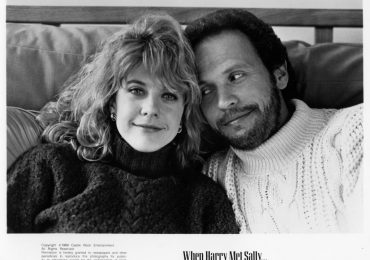If you’ve been watching any of U.S. Open coverage on ESPN over the past couple of weeks, you’ve probably noticed the graphic sitting on the right of the screen, right off the sideline at Arthur Ashe Stadium: a digital stamp touting tennis as “The World’s Healthiest Sport.”
That’s quite an in-your-face claim to make, during the sport’s highest-profile, most-viewed event staged in the United States. During, say, the Super Bowl, I can’t remember football touting itself as “the world’s most exciting sport” or some such on the TV screen (“world’s healthiest” certainly wouldn’t work for football). Or a commercial trumping broccoli or beets as “The World’s Healthiest Food.”
[time-brightcove not-tgx=”true”]
So bold. And effective: with the slogan buried in my brain, I made a point of hitting around some tennis balls for an hour with a friend last weekend. And sure, I felt pretty hearty afterward.
But is tennis really the healthiest sport in the world? Says who?
I did some digging. The short answer: it might be. But if it isn’t—and there’s also a decent chance that it isn’t—the inaccurate message running at all hours during the U.S. Open counts as a victimless violation.
And it could enhance public health.
Because while almost all sports offer benefits to body and mind, a whole body of research, not to mention common sense, shows that the health effects of tennis are particularly powerful. People experience an array of positive outcomes from tennis, such as improved cardiovascular and bone health, better agility and coordination, and overall happiness.
More from TIME
As for its supposed status as the world’s healthiest sport, “I mostly agree,” says Amy Chan Hyung Kim, associate professor in the department of sport management at Florida State University who co-wrote a 2022 study extolling the social benefits of tennis. The United States Tennis Association (USTA), which created the “world’s healthiest” marketing campaign—neither the USTA nor ESPN would reveal whether the USTA pays the network for the in-match digital-ad space—cites Kim’s study in bolstering its case. Even though Kim does “not entirely” agree with the USTA’s claim, given the stress and burnout tennis can cause at the most elite levels, plus the overuse injuries that weekend warriors can suffer.
The USTA might want to ask someone who’s torn their ACL, or has a mean case of tennis elbow, or Rafael Nadal, who has fought pain and injuries throughout his career, had hip surgery last year and abdominal muscle issues in 2024, and missed three of the four major tournaments this season, whether tennis is the world’s healthiest sport.
According to Dr. Brian Hainline, the chairman of the board and president of the USTA since 2023, two particular studies gave him confidence to sign off on the slogan. The first, published in the British Journal of Sports Medicine in 2016, found that in more than 80,000 British adults, participation in racquet sports of tennis, badminton, or squash was associated with a 47% reduced risk of dying during the study period for any reason and a 56% reduced risk of cardiovascular-related death. Compared to all the other activities studied—cycling, swimming, running, soccer, aerobics—racquet sports were most strongly associated with a lower risk of death.
Then, in 2018, a study published in the journal Mayo Clinic Proceedings found that among more than 8,500 adults from Copenhagen who were tracked for nearly 25 years, playing tennis was associated with a life-expectancy gain of nearly a decade compared to those who had a sedentary lifestyle. Other sports examined—badminton (6.2 years), soccer (4.7), cycling (3.7), swimming (3.4), jogging (3.2), calisthenics (3.1), and health-club activities like the treadmill and elliptical machines (1.5)—fell short of tennis.
Tennis as “the world’s healthiest sport” is “very defensible from a scientific perspective,” says Dr. James O’Keefe, director of preventive cardiology at Saint Luke’s Mid America Heart Institute and professor of medicine at University of Missouri-Kansas City, who was a co-author of the Mayo Clinic Proceedings study. “Tennis has better data than any other sport to make that claim. So it’s not BS.”
“When you add everything together—every possible element of eye-hand coordination, agility, balance, aerobic, anaerobic, the psychological elements and physiological elements—that’s when it gets really hard to debate against the game of tennis,” says Jack Groppel, former chairperson of the USTA’s national sports science committee.
Fair enough. We can subjectively debate the health benefits of tennis versus other sports all day. But that doesn’t change a key sticking point: while both studies make a case for tennis, not every sport on the planet was evaluated. So how can tennis legitimately claim to be the healthiest sport on earth?
Hainline acknowledges this shortcoming. “As a scientist, my slogan would be, ‘Tennis has been demonstrated unequivocally to improve your lifespan more than any other sport that has been studied,’” says Hainline, a neurologist who spent more than a decade as chief medical officer for the NCAA. But you can’t tuck that poppy tagline on a TV screen. Hainline is comfortable with the “world’s healthiest sport” marketing, he says, “because I think there is truth to it. As a scientist, if I were in charge of marketing, we probably would be marketing almost nothing. It would be one asterisk after another.”
Two sports could have a particular beef with the USTA. What about squash, which was grouped into the “racquet sports” umbrella with tennis and badminton in the British Journal of Sports Medicine study showing reduced mortality risk of those activities, but not examined alongside tennis in the Mayo Clinic Proceedings piece? Who’s to say it’s not squash driving the life-lengthening benefits of racquet sports or that it wouldn’t offer more gains than tennis?
Another sport with at least a shot against tennis—and that was missing from both studies—is basketball. And I’m not just bringing up hoops as someone who still plays pickup games on a near-weekly basis (OK, I sort of am). The Mayo Clinic Proceedings study in particular points to importance of the social benefits of sports: the games that we play with or against other people, like tennis, badminton, and soccer, scored higher on life expectancy than activities that no doubt help your heart, but by their very nature require a solitary pursuit (cycling, swimming, jogging, calisthenics, and gym workouts).
“Social support is the No. 1 predictor of most all health outcomes, including life expectancy,” says O’Keefe, the study co-author. Weekend-warrior hoops is incredibly social, with the in-person and group-chat smack talking a large part of the fun. If being happy helps you live longer, basketball needs to be in the “healthiest” mix.
Hainline agrees. “To your question of basketball, I would accept the challenge and say, you know, we’re marketing based on what’s available,” he says. “On the other hand, the one thing you’ll never hear me do is promote tennis exclusively.”
While Hainline insists he would have pushed for aggressively marketing tennis’ health benefits no matter the competitive environment, the rapid rise of pickleball has given the charge more urgency. Across the country, the two sports have quarreled over space, with pickleball more often than not winning out. “Pickleball is a challenge to us,” says Hainline. “Where pickleball is really hurting tennis is infrastructure. It’s probably been over a billion dollars’ worth of courts that have been taken away.”
And pickleball could soon fight tennis for “healthiest sport” status, according to the scientist who helped show tennis is king. If the sport, which wasn’t really a player when either study was published years ago, were included in a similar analysis today, “I have no doubt that pickleball would be like tennis,” says O’Keefe. “It would be like badminton. It would be six to 10 years of added life expectancy, even adjusting for everything else.” He bases this assessment on the social bonds among the “thwack thwack” set.
“Racket sports are fun to play for people who get into them,” says O’Keefe, who practices what he preaches. He was looking forward to a match yesterday evening. “It’s a gorgeous day here in Kansas City, it’s going to be like 78 and sunny,” he said. “It’s just perfect. You just can’t do that and not come back happy and relaxed and ready to sleep well. It just makes you love life.”
He was going to play pickleball.
Leave a comment







